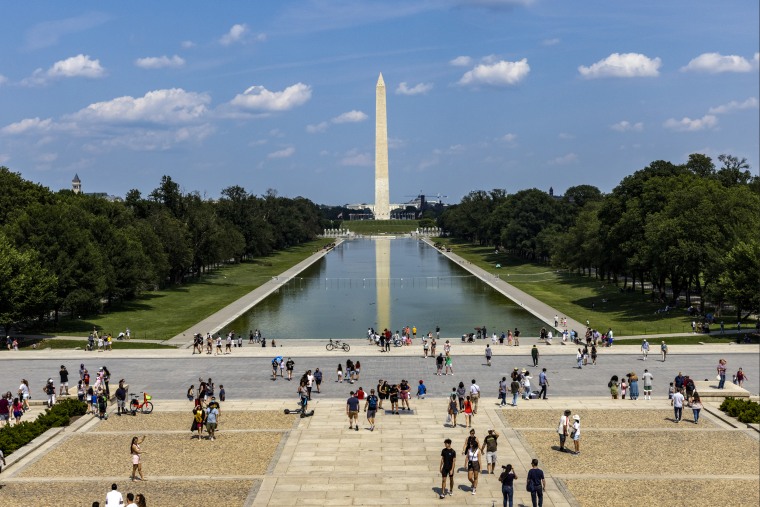Kirstin Garriss
Fri, June 17, 2022
Juneteenth is now a federal holiday marking the end of slavery, but a group of lawmakers says there’s a loophole that has allowed another form of slavery to evolve with forced involuntary labor inside the nation’s prison system.
The ACLU estimates that incarcerated workers produce at least two $2 billion in goods and $9 billion dollars worth of prison maintenance services a year, but those prisoners don’t earn much.
Daniel Rosen said he knows firsthand after serving 6 years in prison.
“You feel like property of the state. A lot prison uniforms say property of that state and it’s not about clothes you’re wearing it’s about the person,” said Rosen, a formerly incarcerated individual who now works for Worth Rises.
Rosen and Robert Willis, who spent 7 years in prison collectively, are part of a national push to improve workforce conditions for prisoners. These two formerly incarcerated men say they understand being held accountable for their crimes, but they say the process should be humane.
“Being dehumanized, not appreciated, and it actually affects you when you return back into society because you just spent the last number of years being you know in slave-like conditions,” said Robert Willis, formerly incarcerated individual and now Justice Advocacy Coordinator for Latino Justice.
A new ACLU report examining prison labor at the state and federal levels shows some states pay prisoners an average of 15 and 52 cents per hour but the state prison systems in Alabama, Arkansas, Florida, Georgia, Mississippi, South Carolina, and Texas don’t pay at all for a majority of its prison work
In a statement to the Washington News Bureau, the Federal Bureau of Prisons said humane treatment is a top priority and that “an inmate’s job assignment shall be made with consideration of the institution’s security and operational needs, and should be consistent with the safekeeping of the inmate and protection of the public.”
Georgia Congresswoman Nikema Williams is leading the effort to remove the slavery clause from the 13th amendment that still allows it as punishment for a crime.
“We’re building towards the future, we’re correcting those things from the past and this is one of those stains of our past that we absolutely need to address, she said.
Congresswoman Williams said she has more than 130 sponsors for the bill in the House which includes some Republican support.
“This an education piece, because I’ll be honest with you, before I came to Congress, I didn’t realize that this was a part of the Constitution,” said Williams. “I’m grateful to be having conversations with you so that we can make sure that people understand that this is still legal in our United States Constitution and that’s why we have to remove it…it’s about making sure that people are aware, and then taking the action to actually do something about it.”
Williams said she will need a two-thirds majority to pass because this is a Constitutional amendment. But Some Republicans aren’t supportive of the measure.
“Requiring convicted, able-bodied criminals, to perform meaningful work is in no way comparable to the atrocity of slave ownership,” said Congressman Ralph Norman (R – South Carolina) in a written statement. “This is another glaring example of how soft on crime the Democrat party has become. Prison is not a bed & breakfast, and it’s not asking too much for convicted criminals to work, especially since the rest of society is shouldered with the massive costs of their incarceration.”
But for Rosen and Willis, they say removing that clause sends a message to the prison system.
“That human rights matter because at the end of the day this is a human rights issue,” said Willis.
The ACLU is also pushing for incarcerated workers to get the same labor protections as other workers which would include earning minimum wage, setting health and safety standards and protection from discrimination.















